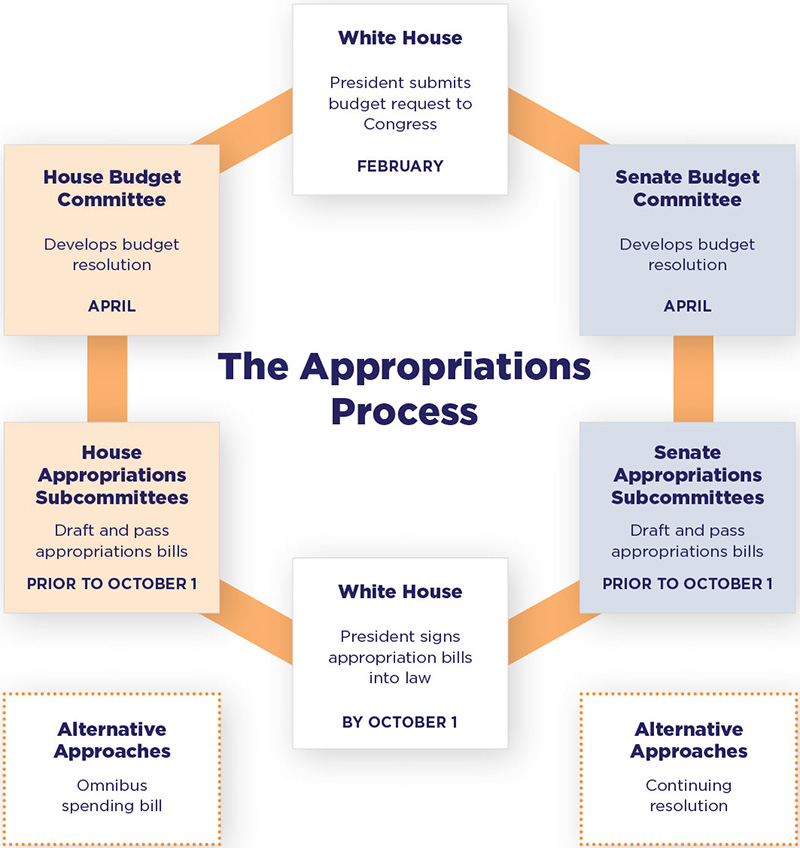The role of Congressional appropriations in basic science research
How is research funded?
The appropriations process has a significant impact on scientific funding — when Congress sets the budgets of key science agencies, that determines the funding options available to federally-funded scientists and sets the strategic priorities of key science agencies. Every year, the ASBMB Public Affairs Advisory Committee actively participates in the Congressional appropriations process by organizing and participating in an advocacy day on Capitol Hill.
Appropriations are choices made by Congress which allow them to distribute federal funding to various departments and agencies. This process specifically addresses discretionary spending which includes the National Science Foundation, the National Institutes of Health and NASA. Discretionary spending can support scientific advancement, whereas mandatory spending includes Medicare, Social Security and interest on the national debt.
The appropriations process
The appropriations process begins when the president submits their annual budget proposal to Congress. This usually occurs on or around the first Monday in February. Following this proposal, Congress creates a maximum spending limit, which is the 302(a) allocation. This overall limit decides the maximum amount of discretionary funding which is available for the year.
After the 302(a) allocation is determined, the total is divided among the 12 appropriations subcommittees in the House and Senate.
The committees are:
- Agriculture
- Commerce, Justice and Science
- Defense
- Energy and Water
- Financial Services and General Government
- Homeland Security
- Interior and Environment
- Labor, HHS and Education
- Legislative Branch
- Military Construction and VA
- State, Foreign Operations
- Transportation, HUD
This division is called the 302(b) allocations. The subcommittees then decide how to distribute funds within their 302(b) allocations. For example, the Commerce, Justice and Science subcommittee oversees the budget for the NSF and NASA.
302(b) allocations are voted on by their respective appropriations subcommittees, but they are not put through review or vote by the full chambers. Once a subcommittee makes its decision, they propose a bill that ultimately must pass through both chambers of Congress and be signed by the president. While the budget process calls for 12 individual bills, they are often all combined into an omnibus appropriations bill, or sometimes a few are combined into minibus appropriations bills. All appropriations bills must pass before the next fiscal year begins on Oct. 1.
What happens if the bills are not passed before Oct. 1?
If appropriations bills are not passed through Congress and signed by the president before the fiscal year begins on Oct. 1, federal funding will expire, which causes a government shutdown. During a government shutdown, all non-essential agencies cease operations. If Congress has passed some, but not all, of the 12 appropriations bills, a partial government shutdown is possible. This would result in essential agencies and certain non-essential agencies continuing operations, whereas others would halt. To avoid a shutdown, Congress can pass a continuing resolution, which prolongs funding and gives additional time for the appropriations process.
Continuing resolutions
A continuing resolution, often called a CR, is a temporary bill that continues funding for all agencies based on a fixed formula, usually based on the previous fiscal year’s spending. Congress is able to pass a CR for all or some of the appropriations bills.

